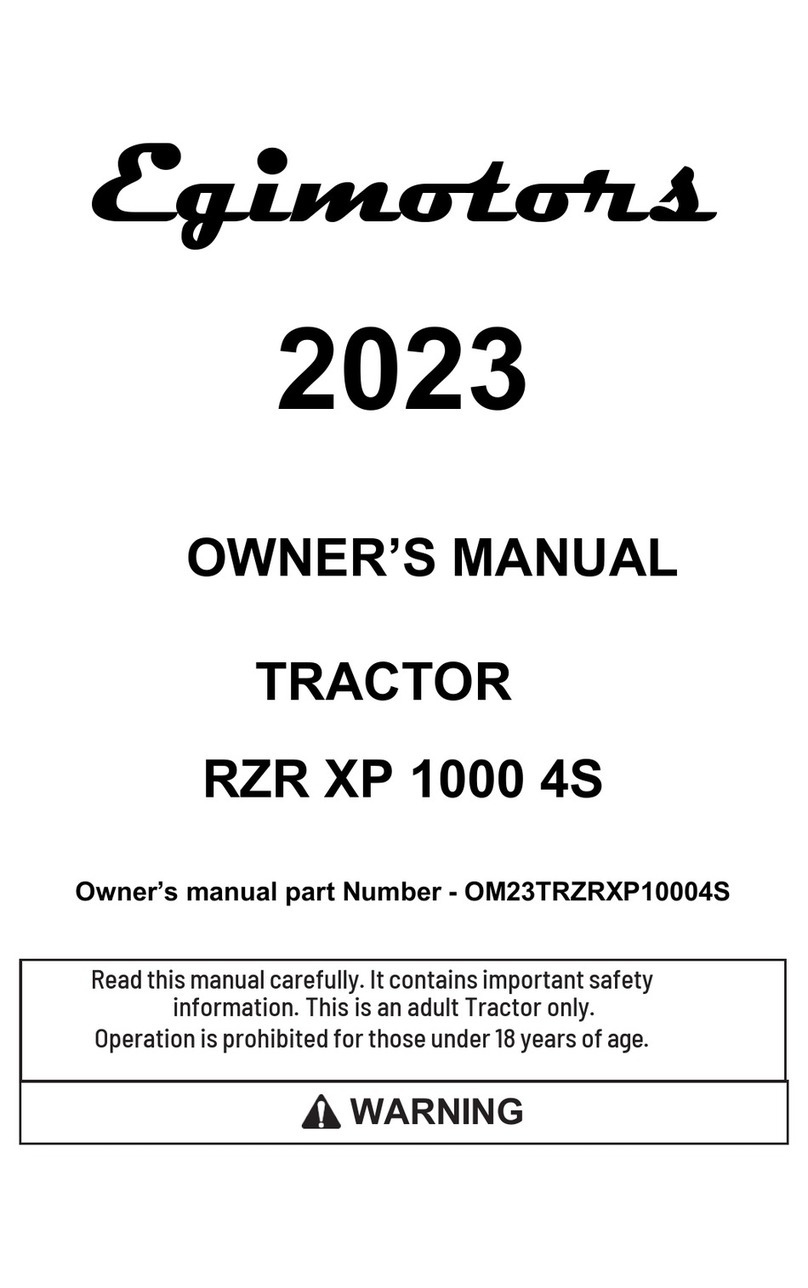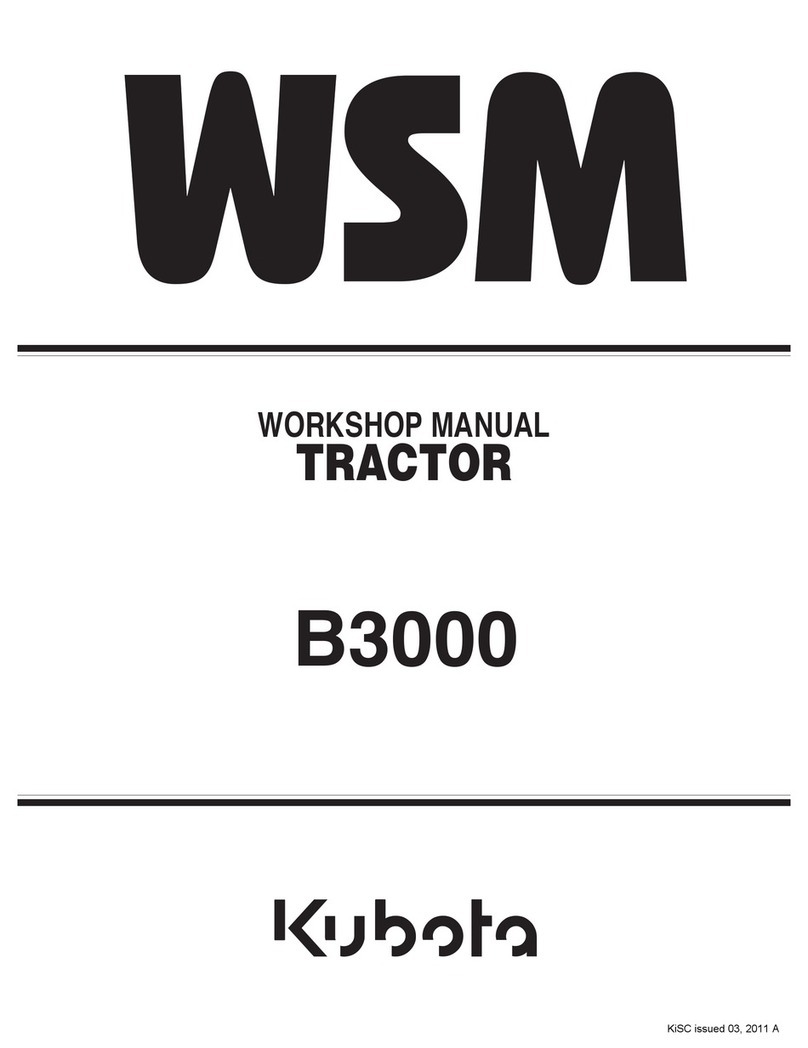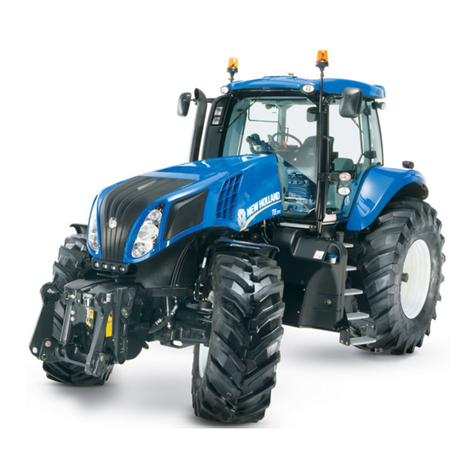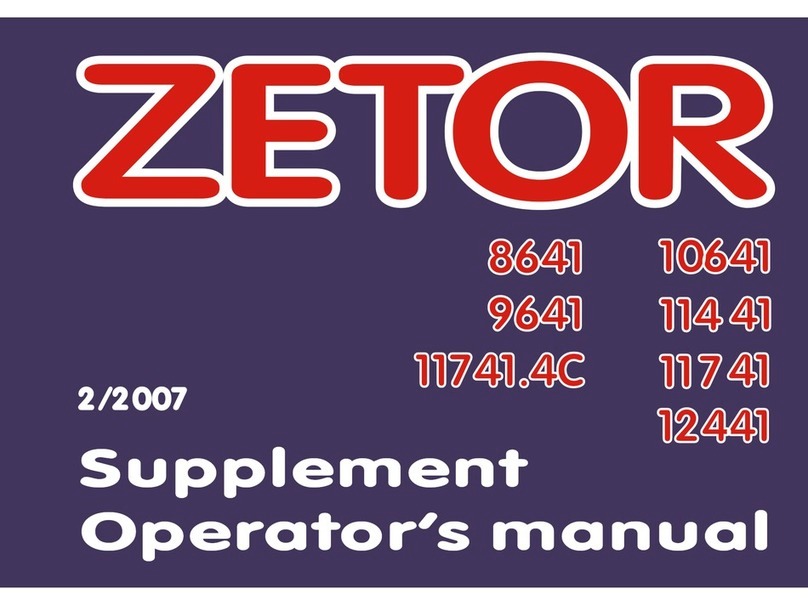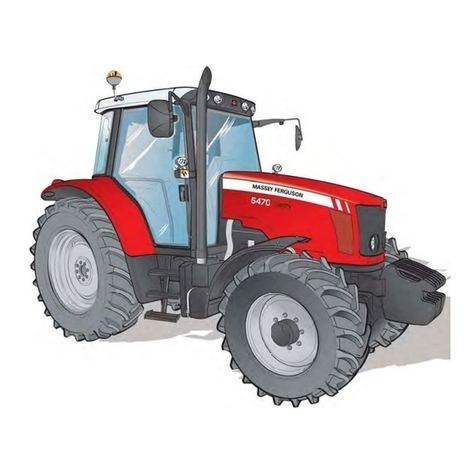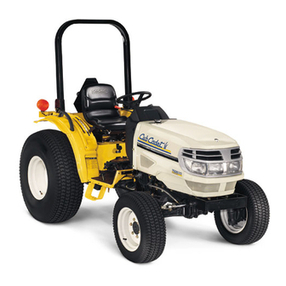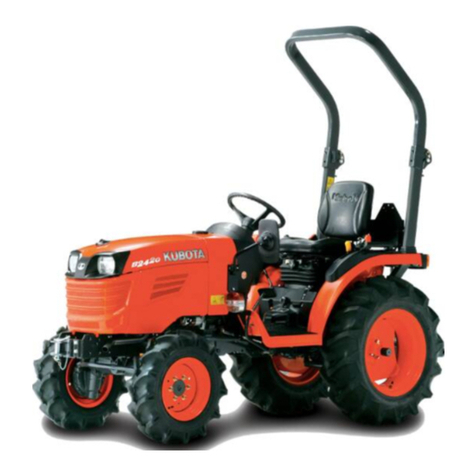Egimotors RZR PRO XP 4 2023 User manual

Read this manual carefully. It contains important safety
information. This is an adult Quadricycle only.
Operation is prohibited for those under 18 years of age.
Egimotors
2023
OWNER’S MANUAL
TRACTOR
RZR PRO XP 4
Owner’s manual part Number - OM23TRZRPROXP4
WARNING

This Owner Manual refers to EGIMOTORS TRACTORS
(To be filled in by your Dealer)
This Owner’s Manual must remain inside you Tractor
(Legal requirement)
A digital/printable copy is available on www.egimotors.it
Year ________________________________________________________
Model Type___________________________________________________
Code number (spare parts use only) _______________________________
VIN Number__________________________________________________
Engine Serial Number __________________________________________
Personal PIN Security Code:______________________________________
Registration Plate Number ________________________________

Thank you for purchasing an Egimotors Tractor, and welcome to our world-
wide family of enthusiasts.
We have done This manual to inform you on how to use and maintain the
best condition of operation for your Tractor.
If after reading this manual, you still have some questions please do not
hesitate to contact your dealer that will be available to help you.
Be sure to visit us online at www.Egimotors.it for the latest news and for
product and Safety information.
We believe we sets a standard of excellence for all utility and Tractor
manufactured in the world today.
Many years of experience have gone into the engineering, design, and
development of your Tractor, making it the finest machine we’ve ever
produced.
For safe and enjoyable operation of your Tractor, be sure to follow the
instructions and recommendations in this owner’s manual.
Your manual contains instructions for the maintenance of the Tractor and
information about repairs.
Service Manual are available from Dealers, only them can perform major
repair and install accessory.
Your dealer knows your Tractor better than anyone and is interested in your
total satisfaction, he can perform your service needs during and after the
warranty period.
For the most up-to-date owner’s manual visit:
http://egimotors.it/libretto-uso-manutenzione/


WELCOME
3
Read and understand this Owner’s Manual is extremely important for your
safety and for all the operators, so please take your time to read all the
pages and be sure that is someone else will use the Tractor before will take
this manual and read and understand all, this will give you the best
knowledge and skills on how to ride in security.
.
All the information contained within this publication is based on the latest
product information at the time of publication.
Due to constant improvement in the design and quality of product
components, some minor discrepancies may result between the actual unit
and the information presented in this publication.
Descriptions and or procedure in this publication are intended for reference
use only. No Liability can be accepted for omission or inaccuracies. Any
reprinting or reuse of the depictions and or procedures contained within this
publication are intended for reference use only. The original instruction is in
English.
Other languages are provided as translation of the original Instruction see
the Egimotors website for more details and procedure.

SAFETY
SYMBOLS
AND
SIGNAL
WORDS
4
DANGER indicates a hazardous situation which, if not avoided, WILL result in
death or serious injury.
DANGER
WARNING indicates a hazardous situationwhich, if notavoided,COULD result
in death or serious injury.
WARNING
CAUTION indicates a hazardous situation which, ifnot avoided,COULD result
in minor to moderate injury.
CAUTION
NOTICE provides key information by clarifyinginstructions.
NOTICE
IMPORTANT provides key reminders during disassembly, assembly, and
inspection of components.
IMPORTANT
The following signal words and symbols appear throughout this manual and on
your Tractor. Your safety is involved when these words and symbols are used.
Become familiar with their meanings before reading the manual.
ICON
DESCRIPTION
The Prohibition Safety Sign indicates an action NOTto take in
order to avoid a hazard.
The Mandatory Action Sign indicates an actionthat NEEDS to
be taken to avoid a hazard.

WELCOME
5
Introduction...........................................................................
Safety......................................................................................
Features and Controls..........................................................
Operation...............................................................................
Emission
Control
Systems
...................................................
Maintenance ..........................................................................
Specifications........................................................................
Products.................................................................................
Troubleshooting....................................................................
Warranty.................................................................................
Maintenance
Log...................................................................
Certificate of Pre-Delivery …………………………………...

INTRODUCTION
6
INTRODUCTION
BEFORE YOU RIDE
WARNING
Failure to heed the warnings and safety precautions contained in this manual
can result in severe injury or death. Your EGIMOTORS vehicle is not a toy and
can be hazardous to operate. This vehicle handles differently than cars,
trucks or other off-road vehicles. A collision or rollover can occur quickly, even
during routine maneuvers like turning, or driving on hills or over obstacles, if
you fail to take proper precautions.
•
Read this owner’s manual that came with your vehicle.
•
Understand all safety warnings, precautions and operating procedures
before operating the vehicle. Keep this manual with the vehicle.
•
Neveroperate thisvehicle withoutproperinstruction. Takean authorized
training course. See the Safety Training section for more information.
•
Thisvehicle isan ADULTVEHICLEONLY. YouMUST beat least age 18
and have a valid driver’s license to operate this vehicle.
•
Always use the cab nets (or doors) while riding in this vehicle. Always keep
hands, feet and all other body parts inside the vehicle at all times.
•
Always wear a helmet, eye protection,gloves, long-sleeve shirt, long pants
and over-the-ankle boots.
•
Never operate this vehicle under the influence of drugs or alcohol, as these
conditions impair judgement and reduce the operator’s ability to react.
•
Complete a training course before operating this vehicle. Never allow a
guest to operate this vehicle until the guest has completed a training course.
•
Never permit a guest to operate this vehicle unless the guest has reviewed
the owner’s manual and all safety labels and has completed a safety training
course

SAFETY
11
SAFETY
OWNER REQUIREMENTS
Improper use, maintenance, or modification ofthisTractor can lead to
serious injury or death.
Require proper use of your Tractor. Do not allow
anyone to operate your Tractor orride as a passenger
unless they are properly instructed and you are sure
they are willing to ride responsibly. To prevent
unauthorized use, always remove the ignition key
when the Tractor is not in use.
Anymodifications orinstallation of non-EGIMOTORS-approvedaccessories
could increase the risk of injury. While you may find aftermarket products
similar in design and quality to EGIMOTORS accessories, recognize that some
aftermarket accessories or modifications are not suitable because of potential
safety hazards to you or others. It is never appropriate to install any additional
seating.
Check with the manufacturer to determine any potential effectofa modification
or accessory on the safe use of your Tractor. You are responsible for injuries
related to modifications to the Tractor. Modifications or accessories may:
•
Damagemachine components - especiallymodificationsthat increasespeed
or power.
•
Make the Tractor less stable at higher speeds.
•
Add weight, reducing the amount ofcargo and total weight you can carry, and
raise the Tractor’s center of gravity.
•
Overloadthe Tractor’s electrical system capacity. Blowinga fusemay causea
loss of lights or engine power.
•
Reducethe effectivenessof occupantprotection systems, including the
seatbelts and the Rollover Protective Structure (ROPS).
•
Make it illegal to own or operate your Tractor. EGIMOTORS-authorized
spark arresters, mufflers, and emissions control components are
mandatory for ownership or operation in many areas.
•
Void your warranty.
The Tractor ROPS, when used with the seat belts and doors, provides a
structure to help protect occupants.The structure will notprotect occupants
in all rollovers or accidents.

SAFETY
12
DRIVER
AND
PASSENGER
QUALIFICATIONS
Make sure operators are 18 orolderwith avalid
driver’s license. Just because a teenager has a
license does not mean that they will make good
judgments about driving and avoid risk taking.
EGIMOTORSrecommends thatyou supervise younger
drivers. Set rules and put limits on how, when, and where
they are allowed to use this Tractor. For example, young
drivers may need to have an adult in the Tractor with them
and not be allowed to drive with their friends in the Tractor.
Make sure all riders fit the Tractor. Be sure that the driver and all passengers
are able to:
•
sit with their backs against their seat,
•
adjust the seat belt to fit properly,
•
have both feet flat on the floor, and
•
have both hands on the steering wheel or on a passenger hand hold.
Do not allow children who need child safety seats or booster seats to ride
in the Tractor. The Tractor is not designed to restrain automotive child safety
seats.
Youare responsible for your passengers. Besure passengers are seated
properly, belted, holding the passenger hand hold, and ready to brace.
Unrestrained riders can fall out or be thrown around and from a moving Tractor.
Every person must be properly seated and belted in their own seat. Two
people should never be belted into a single seat belt. People belted together can
crash into one another in a collision and be seriously injured. Never carry
passengers in the cargo bed as they could be thrown against or out of the
Tractor or come into contact with moving parts.
Do not let people drive or ride after using alcohol or drugs.
18

SAFETY
13
PREPARE TRACTOR FOR THE RIDE
Before starting off, always perform the Pre-Ride
Inspection. Failure to inspect and verifythat the Tractor is
in safe operating condition increases the risk of an
accident, which can lead to serious injury or death.
ITEM
REMARK
Brake Fluid
Ensureproper leveland
condition
Frontand rear
suspension
Inspect,lubricate if
necessary
Steering
Ensure free operation
Tires
Inspectcondition and
pressure
Wheels/Lug
Nuts
Inspect, ensure
fastenertightness
Fuel and oil
Ensureproper levels
and condition
Coolant
Ensureproper leveland
condition
Indicator
lights/switches
Ensureproper
operation
Air Filter
Inspect,replace as
needed
Engineintake pre-filter
Inspect,clean
PVT
intake
pre-filter
Inspect,clean
Headlights
Checkoperation
Brake lights/taillights
Checkoperation
Seat Latches
Pushdown onboth seat
backs to ensure the
latches are secure

SAFETY
14
ITEM
REMARK
Seat Belts
Check length of belt for
damage, check latches
for proper operation
Exhaust
Inspectspark arrester
and clean if needed.
Tractor
Debris
Removegrass, leaves,
and other flammable
material or debris,
especially near the
exhaust system.
Passenger Hand Hold
Alwaysadjust thehand
hold to a comfortable
position for your
passenger before
operating. Make sure
the clasps are fully
locked after making
adjustments.
Lock adjustable
steering wheel
Do not adjust the
steeringwheel whilethe
Tractor is moving.

SAFETY
15
Improper tire maintenance can lead to loss of control and an accident, which
could result in serious injury or death. To reduce your risk of injury:
•
Maintain EGIMOTORS recommended tire pressure. Check pressure before
operating. Even if your Tractor has only been driven a short distance, the tire
pressure readings can become higher.
•
Make sure tire pressures match the specifications listed in the table below.
•
Only use the size and type of tires specified for this Tractor.
•
Do not operate your Tractor with worn or damaged tires.
•
Always follow your tire manufacturer’s instructions for maintenance.

SAFETY
16
PREPARE YOURSELF, PASSENGERS, AND
CARGO FOR THE RIDE
Wear an approved helmet. Riding in this Tractor without wearing an approved
helmet increases the risk of serious injury. For example, a helmet reduces your
risk of injury from head strikes with the Tractor or other objects even if there is no
crash.
Approved helmets in Europe, bear the ECE
22.05 label. The ECE mark consists of a circle
surroundingthe letterE, followedbythe distinguishing
number of the country which has granted approval.
The approval number and serial number will also be
displayed on the label.
Use shatterproof goggles or a shatterproof helmet face shield. Such
protective eyewear may reduce the risk of foreign material gettingin your eyes
and help prevent loss of vision.
EGIMOTORSrecommends wearingapproved
Personal Protective Equipment (PPE) that have
markings indicating they are designed to standards
such as:
•
CE
Additionalprotective clothing and gear that may be appropriate for your
riding conditions includes:
•
Alwayswear shoeswhen operating.Consider wearing sturdyover-the-ankle
boots suitable for the terrain you will be riding in.
•
Full-finger gloves can protect against wind, sun, cold, and objects. Choose
gloves that fit snugly and allow fingers to move freely and grip on the steering
wheel or hand holds.
•
Consider long sleeves and long pants to help protect arms and legs.
•
Long-term exposure to wind and engine noisecan cause permanent hearing
loss. Properly worn hearing protective devices such as earplugs can help
prevent hearing loss. Check local laws or the rules of the riding area you are
in before wearing hearing protection to make sure its use is permitted.

SAFETY
17
Always stay completely inside the Tractor and hold the steering wheel or
hand holds. Body parts outside of the Tractor can be struck by passing objects
or crushed during a rollover. Do not put any part of your body outside of the
Tractor for any reason. Do not hold onto the ROPS frame or put any part of your
body on the door.
Riding in this Tractor without closed and latched cab doors increases the risk of
serious injury or death in the event of an accident or rollover. Always make sure
all cab doors are closed and latched while riding in this Tractor.
Be sure riders pay attention and plan ahead. If you think or feel the Tractor
may tip or roll, reduce your risk of injury:
•
Keep a firm grip on the steering wheel or hand holds and brace yourself.
•
Do not put any part of your body outside of the Tractor for any reason.
This Tractor isnot designed to carry unrestrained pets.An unrestrained pet
can be thrown about and injure riders, even during normal operation. When
transporting pets, use a pet crate suitable for off-road use that is secured to the
Tractor.
Fuels such as gasoline can be extremely flammable. To reduce the risk of
serious injury or death, never carry fuel or other flammable liquids on this
Tractor. Rollovers, crashes, rough riding, orchanges in elevationor temperature
may lead to fuel spilling or vapor release from portable containers. Hot Tractor
parts can cause fires, even after the engine has been turned off.
Never exceed Tractor weight capacities. Overloading the Tractor or carrying
cargo improperly will cause changes instability and handling, which could cause
loss of control or an accident. See the Specifications chapter for weight
capacities.
Secure cargo in the cargo box as far forward, centered and as low as
possible. When cargo cannot be positioned and secured in this way, operate
with extra caution. Unsecured cargo can strike and injure riders,affectTractor
handling, and result in loss of control.
The weight of riders and cargo changes Tractor braking, handling, and
stability. To avoidloss ofcontrol,turn gradually,operate at slower speeds, and
avoid rougher or steeper terrain.

SAFETY
18
DRIVING
GUIDELINES
Drive Responsibly. This Tractor has higher
ground clearance and other features to handle
rugged terrain. It can be overturned in situations
where some other Tractors may not. Abrupt
maneuvers or aggressive driving, even on flat,
open areas, can cause loss of control, rollovers,
severeinjury ordeath. Toavoidloss ofcontrol and
rollovers:
•
Avoidabrupt maneuvers, sideways sliding, skidding, orfishtailing, and never
do donuts.
•
Slow down before entering turn.
•
Avoid hard acceleration when turning, even from a stop.
High speed off-road operation
Driving off-road Tractors to test the limits of your skills or abilities can be very
dangerous to you, passengers, and bystanders. Basic skills for driving a car,
ATV, or other off-road Tractors do not equip drivers to safely attempt high speed
off-road operation. Develop your skill gradually through training, practice, and
experience with the various driving modes of this Tractor and theterrain in which
you are operating. Always do a low-speed reconnaissance run (pre run) to
become aware of anything you may encounter.
High speed off-road operation can lead to loss of control, crashes, or hard
landings that can seriously injure occupants (even without rollingthe Tractor or
damaging it).
If you plan on using the Tractor for high speed, off-road competition, additional
safety equipment may be necessary. Check the rules that apply to your
competition.
Do not go over jumps —going airborne can lead to serious injury or death.
Going airborne can cause loss of control, rollovers, or crashing into the ground
and may damage the Tractor. Even without crashing, landings can be hard
enough to cause any Tractor suspension to fully compress (e.g., bottom out).
Serious injuries, including spinal injuries, can occur even if ridersare properly
harnessed, wearing helmets and the Tractor is not damaged and remains
upright.
You may encounter slopes, "jumps", or other terrainfeatures thatcould send the
Tractor airborne, depending on your speed.These may be defectively designed,
poorly maintained, or not suitable for this Tractor. Slow down, use extra care,
and avoid going airborne. Never take this Tractor over jumps.

SAFETY
19
Watching someone else go over a jump or go airborne does not mean you can
safely do so. Egimotors cannot determine whether any jump you may encounter
is appropriate for this Tractor. Any jump, even a small one, could be poorly
maintained, designed, or not suitable for this Tractor and may cause serious
injury or death.
Plan for hills, rough terrain, ruts, and other changes in traction and terrain.
Proceed slowly and with extra care on unfamiliar terrain. Avoid paved surfaces.
Sudden changes in terrain such as holes, depressions, banks, softer or harder
ground, or other irregularities may cause loss of control or rollover. Give yourself
time to react to rocks, bumps, or holes that may be hard to see. Operating in
deep snow or tall grass may make it harder to see obstacles.
If you cannot go around an obstacle, such as a fallen tree or a ditch, stop the
Tractor in a safe place. Get out to inspect the area thoroughly. Look from both
your approach side and exit side. If you are reasonably confident you can
continue safely, choose the path that will allow you to go straight over the
obstacle to minimize the Tractor tipping sideways. Go only fast enough to
maintain your momentum, but still give yourself plenty of time to react to
changes in conditions. If there is any question about your ability to maneuver
safely over the obstacle, you should turn around if the ground is flat and you
have the room, or back up until you find a less difficult path.
Abrupt application of the accelerator pedal can cause the tires to lose traction,
reducing control of the Tractor and increasing the possibility of an accident,
especially while on sloped terrain or while crossing obstacles such as rocks or
logs.
Operating on Public Roads
If your Quadricycle is registered with a license plate as for public use road,
anyway, operating this Quadricycle on mayor public streets could result in a
collision with another vehicle.
Never operate this Quadricycle on highway see your locals law concerning the
category of your Quadricycle and where you can use it.
Quadricycles are allowed only on secondary road with a limited speed, respect
all the rules.

SAFETY
20
Improperly operating on hills can cause loss of control, rollover, or
accident, which can lead to serious injury or death. Use extra care when
operating on hills. Plan for rough terrain, ruts, and other changes in traction and
terrain.
Driving up hills
Check the terrain before ascending a hill and make sure it is not too slippery or
loose. Engage all-wheel drive for hills. Drive straight uphill, keeping speed and
throttle steady. Avoid steep hills which can cause the Tractor to overturn.
Recovering from stalling on a hill
If the Tractor loses forward speed, apply the brakes gradually and stop. Do not
attempt to turn the Tractor around. Instead, shift to reverse and allow the Tractor
to slowly roll straight downhill. Apply light brake pressure to control speed.
Overtopping a hill
Slow down when you reach the crest of a hill. Never blindly go over the crest of a
hill or a drop off at high speed. An obstacle, a sharp drop, or another Tractor or
person could be on the other side of the hill.
Driving down hills
Check the terrain before descending a hill and make sure it is not too slippery or
loose. Engage all-wheel drive and proceed slowly, applying the brakes lightly.
Never descend a hill with the transmission in neutral or if the engine is turned off.
Avoidside hilling (riding across slopes)
If unavoidable, proceed slowly and with extra caution. Avoid obstacles and
changes in terrain that could cause the Tractor to tip or slide. If it feels like the
Tractor begins to tip or slide, immediately turn downhill.
Riding near wooded areas or brush
Useextra caution when operating near trees, particularly when operating on
narrow trails. Tree branches or brush can be driven into the cab striking or
stabbing occupants.

SAFETY
21
Riding in snow
Always keep the brake and accelerator pedals free of snow and ice. Apply the
brakes frequently to prevent ice or snow accumulation on the brake pads which
can reduce brake performance.
Riding on ice
Never operate the Tractor on a frozen body of water unless you have verified
that the ice can support the weight of the Tractor. Severe injury or death can
result if the Tractor falls through the ice.
Riding in water / Falling into water
Operating through deep or fast-flowing water can cause loss of traction, loss of
control, overturning, or being swept away in water. You can be seriously injured
or killed from entrapment and drowning. Never operate the Tractor in
fast-flowing water or in water that exceeds the floor level of the Tractor. Avoid
sharp drop-offs and large rocks. Choose a path that provides an entrance and
exitpoint with gradual inclines. Wetbrakes may have reducedstopping ability.
After leaving water, test the brakes. Apply them lightly several times while
driving slowly. The friction will help dry out the pads.
Riding on sand dunes
Use extra caution when operating on or near dunes. Be alert for changes in
terrain. Never blindly go over the crest of a hill or a drop-off at high speed. An
obstacle, a sharp drop, or another Tractor or a person could be onthe other side
of the hill.
Riding in low-visibility conditions
Use extra caution and drive slowly in conditions of reduced visibility such as fog,
rain, and darkness.
Plan ahead to avoid the need for evasive maneuvers, such as swerving.
Hitting an obstacle —including wildlife —you are not ready for can be
dangerous. Choosing to swerve instead can beeven more dangerous because
it can lead to loss of control, rollover, or collisions.
When operating in areas with possibility of wildlife appearing in your path, plan
ahead to avoid swerving for animals if doing so could result in collisions or
rollovers. Go slowly or avoid driving during seasons or times of day when
animals such as deer are more likely to cross your path without warning.

SAFETY
22
Avoid Collisions With Other Tractors
When following another Tractor or operating in the same area as others, keep a
safe distance to avoid collisions. Allow extra space when sight distances are
limited by dust, snow, curves, hills, or other conditions. Plan ahead to avoid
having to swerve or leave the trail to avoid a collision.
On trails, be prepared to make space for other Tractors to pass. If you need to
stop on a trail, move your Tractor to the edge of the path to allow others to pass
safely.
Correct a skid by turning the steering wheel in the direction of the skid.
Never apply the brakes during a skid.
If the Tractor begins to slide downhill or you feel it may tip, turn downhill
immediately and stop. Maneuver slowly and carefully until you can drive straight
downhill.
Do not continue driving if your Tractor may be damaged or if you were in a
crash or rollover.
Operating the Tractor while damaged or after a crash or rollover can cause loss
of control, rollover, or accident, which can lead to serious injury or death. If you
cannot safely transport the Tractor on your own, contact a recovery and towing
service.
After any crash, rollover, or otheraccident, have aEGIMOTORSdealer inspect
the Tractor for possible damage, including seat belts, ROPS, brakes,
suspension, and steering systems.
Be prepared in case your Tractor becomes damaged or disabled, especially in
remote areas. Consider in advance how to get help and stay safe until it arrives
whenever you ride.
The Tractor does not have a tow hitch and is not designed to tow another
Tractor for any distance.
Towing can alter Tractor handling and maycause loss ofcontrol.
Other Egimotors Tractor manuals
Popular Tractor manuals by other brands
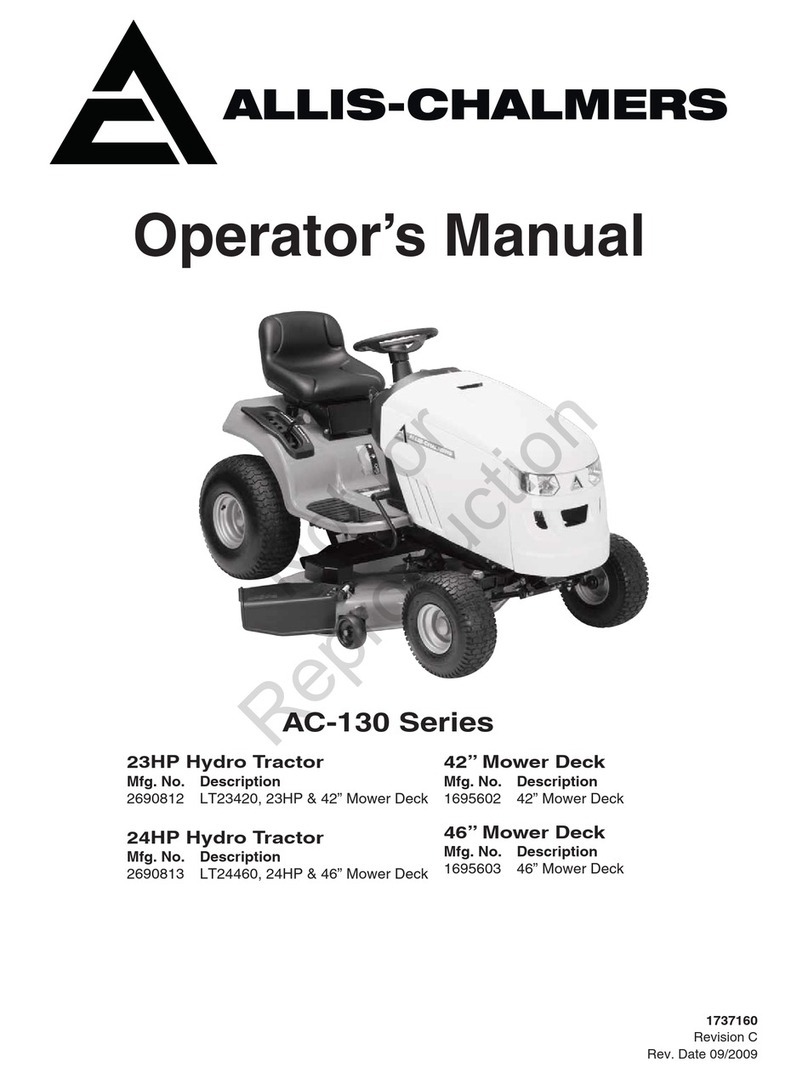
Allis-Chalmers
Allis-Chalmers ac130 series Operator's manual

International Harvester Company
International Harvester Company CUB Operator's manual

Gardol
Gardol 155107HRB instruction manual
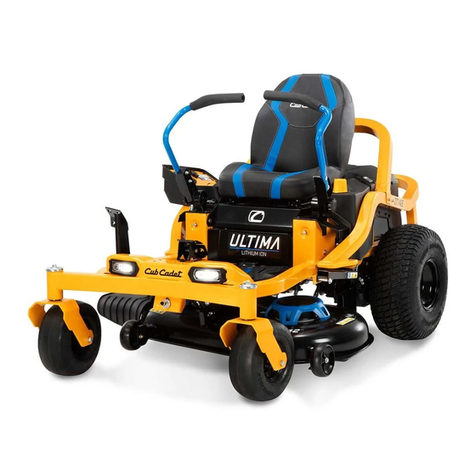
Cub Cadet
Cub Cadet Ultima ZT Series Operator's manual

Kioti
Kioti L3503 owner's manual

Cub Cadet
Cub Cadet GT 2544 Operator's manual

